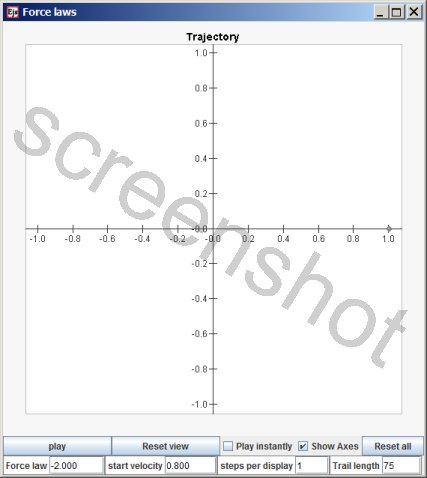Force laws
The two long range forces of physics, newtonian gravity and the electrostatic force, are inverse square laws; their strength diminishes proportional to distance squared. what if there would be a force that diminishes proportional to the first power of distance? Or a force that is proportional to the inverse third power?
With this applet those variations can be explored. The default input for the force exponent is -2, which is R-2.
The animation's controls
The input fields
- Force exponent Setting the exponent to 1 gives a harmonic force, setting the exponent to -2 gives an inverse square force
- Start Velocity A start velocity of 1 will give a circular orbit for any force law. A setting other than 1 gives an eccentric orbit.
- Steps per display If you let the object pass very close to the primary then the trail may show artifacts. Increasing the number of steps is likely to give a smoother trail.
- Trail length The trail length can be increased 'on the fly' - a decrease in trail length becomes effective on starting a new simulation run. An input value of 0 gives an unlimited trail
When you start editing an input field it turns yellow. Confirm an edit by pressing 'Enter' on the keyboard. Confirming removes the yellow.
The building tool
This simulation has been created with EJS
EJS stores the specifications of a simulation in a plain text file, with extension .xml
You can examine how the simulation has been set up by opening the simulation .xml file with EJS.
Download location for the EJS software
Download location for the Force laws source file
(The file is zipped because a browser will attempt to parse any .xml file.)

This work is licensed under a Creative Commons Attribution-ShareAlike 3.0 Unported License.
Last time this page was modified: June 18 2017
